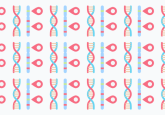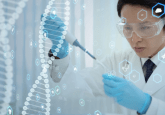Gene therapy could restore hearing in children with genetic hearing loss

In an exciting new study published in Nature Medicine, researchers have successfully restored hearing in children with hereditary deafness using adeno-associated virus 1 (AAV1)-human otoferlin (hOTOF) gene therapy. This trial marks a significant advance in the treatment of autosomal recessive deafness 9 (DFNB9), a condition caused by mutations in the OTOF gene.
Genetic hearing loss accounts for 50% of all cases of hearing loss. This includes approximately 200,000 people worldwide who are deaf due to mutations in the OTOF gene. OTOF encodes the otoferlin protein, which is essential for the brain to interpret sound. Pathogenic sequence variants of OTOF cause DFNB9, accounting for approximately 2–8% of hereditary deafness.
Traditional treatment options for DFNB9 have been limited, and although AAV gene therapy offers a promising and safe alternative, pre-existing neutralizing antibodies against AAV can restrict administration of the AAV vector and cause immunotoxicology. However, bilateral ear injection of the AAV vector could overcome the risks associated with anti-AAV neutralizing antibodies.
To explore this concept further, the new study investigated the potential of binaural (both ears) AAV1-hOTOF gene therapy in DFNB9 patients.
You may also be interested in:
- The new frontier: the bioanalysis of cell and gene therapies
- Innovation at QPS Taiwan’s Leukopak facility: an interview with Polung Yang
- Challenges and opportunities for bioanalytical support of new drug modalities
Researchers screened 316 volunteers, selecting five children (three boys and two girls) with congenital hearing impairment in both ears. These participants, aged between 3 and 11 years, had mutations in the OTOF gene and significant hearing loss (≥65 decibels in both ears). The study excluded individuals with high levels of pre-existing neutralizing antibodies against AAV1, which could hinder the therapy’s effectiveness.
During a single surgery, each child received an injection of AAV1-hOTOF directly into both cochleae — part of the inner ear. Researchers monitored the first three patients for 26 weeks and the remaining two for 13 weeks, assessing the safety and efficacy of the therapy.
Remarkably, no severe adverse events or dose-limiting toxicity were observed. The most common minor side effects included elevated lymphocyte and cholesterol levels. Hearing improvements were significant across all participants, with average auditory brainstem response thresholds — defined as the lowest level at which a clear response is present — decreasing from over 95 decibels at baseline to an average of 69 decibels after treatment.
All five children showed restored speech perception and improved ability to localize sounds. Assessments using various auditory performance scales also indicated notable progress in auditory integration and speech use.
At 6 weeks post-treatment, all participants developed neutralizing antibodies to AAV1, with higher levels in the bilateral therapy group. However, interferon gamma ELISpot responses to AAV1 capsid peptide pools and vector DNA in the participants’ blood were negative during the treatment follow-up and immune responses remained manageable.
The study findings indicate that AAV1-hOTOF binaural gene therapy could be a viable, safe and effective treatment for DFNB9, offering hope for broader applications in hereditary deafness. The success of this trial paves the way for future gene therapies targeting various genetic causes of hearing loss, potentially transforming the lives of millions affected by similar conditions.






